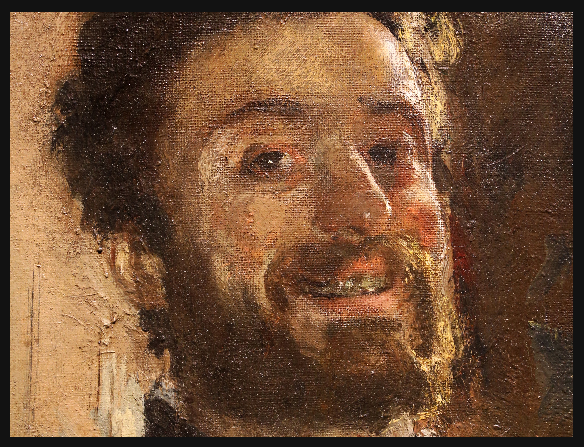
Antonio Mancini
November 14, 1852 – December 28, 1930
One of the most important Italian painters of the nineteenth century, Antonio Mancini's life was marked by extraordinary artistic talent, deep personal struggles, and revolutionary technical innovations. Today he is considered the most admired painter by professional academic artists.
Introduction
Born in Rome to Paolo Mancini, a tailor from Narni, and Domenica Cinti from Terni, Antonio Mancini showed such precocious artistic talent that at just twelve years old, he was admitted to the Academy of Fine Arts in Naples. There he studied under the master painter Domenico Morelli, as well as Filippo Palizzi and Stanislao Lista.
Mancini's life often takes the shape of a tale—from child prodigy to mental health crisis, from poverty to international recognition. He was close friends with sculptor Vincenzo Gemito, who was the same age, and with whom he shared a poor and difficult youth. This shared experience of poverty profoundly influenced both their artistic work, enabling authentic empathy with their subjects: the scugnizzi (street urchins) and saltimbanchi (acrobats) of Naples.
Despite periods in Paris where he met the great Impressionists—Degas, Manet, and his lifelong friend John Singer Sargent—Mancini remained deeply connected to Italian nineteenth-century naturalism. His dedication to the Verismo movement and his revolutionary technical innovations, including the famous graticola (grid) method and the embedding of unconventional materials in wet paint, mark him as a unique figure who anticipated modernist techniques while maintaining classical subjects.
Key Achievements
Admitted to Naples Academy of Fine Arts at age 12, an unprecedented early admission reflecting his precocious talent.
First international sales at age 19 at the Neapolitan Promotrice, purchased by foreign patrons.
Paris period: worked for major art dealers Adolphe Goupil and Hendrik Willem Mesdag, met Degas, Manet, and befriended John Singer Sargent who called him "the greatest living painter."
Signed contract with Dutch patron Hendrik Willem Mesdag for regular stipend in exchange for paintings (approximately 150 works, now at Mesdag Collectie, The Hague—the largest collection worldwide).
Hosted by French industrialist Fernand du Chêne de Vère at Villa Jacobini in Frascati for 11 years.
Venice Biennale dedicated a solo exhibition to his work.
Admitted to the Academy of Italy at age 77, just one year before his death.
Artistic Significance
Mancini's work bridges the gap between nineteenth-century naturalism and twentieth-century modernism. His revolutionary graticola technique—using wooden frames with string grids for optical accuracy—and his pioneering practice of embedding glass, fabrics, buttons, tin foil, and other materials into wet paint to capture the "shimmer of reality" anticipated assemblage techniques by decades.
His subjects ranged from the street urchins and acrobats of his early Neapolitan period—painted with dark, tenebrous oils showing the influence of his teacher Morelli's chiaroscuro—to the society portraits of his later years. After exposure to Venetian painting in 1872, his palette brightened considerably, and his late works are characterized by an "agitated manner, vivid flashes of light, placed on the canvas in clumps of violent color and bright drips."
John Singer Sargent's endorsement—calling Mancini "the greatest living painter"—helped facilitate British and American patronage. Today, major collections exist at the Mesdag Collectie in The Hague, the Philadelphia Museum of Art, the Galleria Nazionale d'Arte Moderna in Rome, and museums throughout Italy and internationally.
Legacy
Antonio Mancini's life and work demonstrate the complex relationship between artistic genius and personal struggle. From his admission to the Academy at age twelve to his final recognition by the Academy of Italy at age seventy-seven, his career spanned the dramatic transformations of late nineteenth and early twentieth-century art.
His technical innovations—particularly the graticola method and material experimentation—confirm how deeply he felt "the crisis of naturalism" and sought new methods to capture reality with unprecedented intensity. Despite disconnection from the most current trends in French Impressionism, Mancini carved a unique path that continues to inspire contemporary realist painters.
Note: This website presents verified biographical and artistic information about Antonio Mancini. Some dates and details are still under scholarly verification and will be updated as archival research continues.